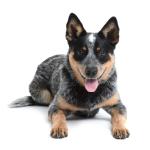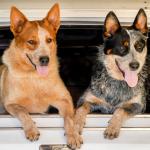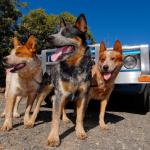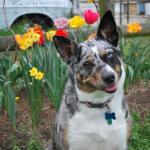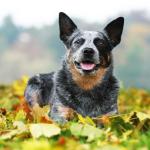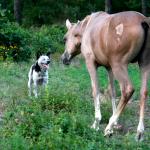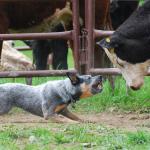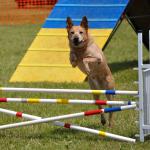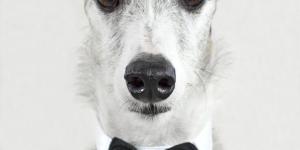Australian Cattle Dog
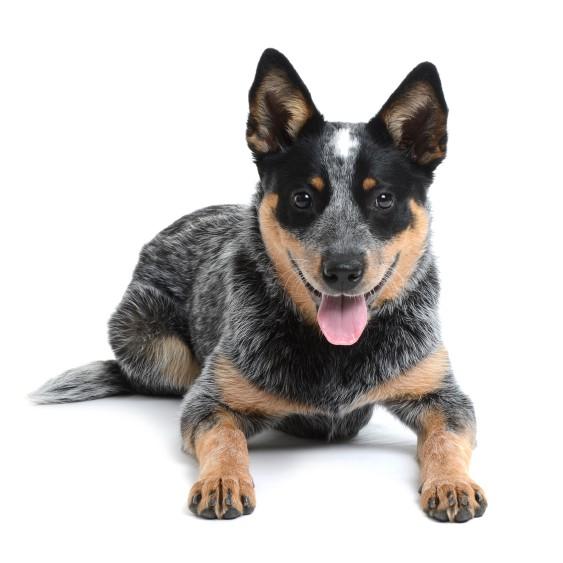
The Australian Cattle Dog or ACD, also nicknamed Queensland heeler, and Red or Blue Heeler depending on their coloring, is a beloved dog breed with amazing qualities for advanced training, herding and sports.
They are excellent dogs, but they are not suitable for just any owner. They have great physical and mental activity requirements and they need constant motivation and extensive training, which makes them only suitable for experienced owners.
In this AnimalWised file you will discover all you need to know if you are considering adopting an Australian Cattle Dog, including an overview of their temperament, behavior, necessary care and training tips.
- Australia
- Australia
- Group I
- 5-14
- 14-18
- 18-22
- 22-27
- 27-31
- More than 31
- 2-7
- 7-22
- 22-55
- 55-100
- 100-220
- 8-10
- 10-12
- 12-14
- 15-20
- Low
- Meidum
- High
Origin of the Australian Cattle Dog
Unlike the Australian Shepherd, the Australian Cattle Dog is indeed native to Australia. European colonialists who migrated there in the late 18th and early 19th Centuries needed dogs to herd livestock in harsh, rugged landscapes. Unfortunately, the dogs they had brought over were unable to work in the extreme heat and difficult conditions.
In 1840, cattle farmer Thomas Hall decided to crossbreed blue merle dogs, probably of the Collie or Old English Sheepdog type, with tamed dingoes. The result were the ancestors of the contemporary Australian Cattle Dog, who were in turn bred with Dalmatians, Bull Terriers and Australian Kelpies.
Over time, breeders developed an incansable, intelligent and courageous dog breed able to herd the most headstrong cattle in extreme conditions. They are not very popular worldwide, but the lucky people who share their life and work with Australian Cattle Dogs are loyal fans of the breed and always praise their amazing qualities.
Physical traits of the Australian Cattle Dog
These dogs are strong, muscular and agile: they are resilient, but not rough. They are slightly longer than they are tall, with a level - not slanted - superior line. Their chest is deep and muscled. Their tail starts moderately low and it almost reaches their ankles. When they are at rest, their tail hangs in a slight curve; when they are active, they raise their tails but not beyond a vertical line.
Their head is robust but well-proportioned, and some of their traits reveal that the ACD breed is related to the dingo. They have a black nose and oval, deep brown eyes with a lively and intelligent look that turns wary when strangers come near. Their medium-sized ears are wide at the base, erect and slightly pointy.
The Australian Cattle Dog's coat is soft, and has a double layer. The outer layer is characterized by dense, hard, straight hair, while the inner layer is thick and short. This breed comes in two varieties, the Red Heeler with a speckled or tickled red coat and usually a higher density of red areas on their head, and the Blue Heeler with a solid, mottled or speckled blue coat that can have red, black or white markings.
This is a medium-sized breed: males are 46 to 51 cm (18 to 21 in) tall at the withers, while females are 43 to 48 cm (17 to 19 in) tall. Their weight can range from 25 to 50 kg (55 to 110 lb), depending on the dog's size.
Temperament of the Australian Cattle Dog
Australian Cattle Dogs are known for being very loyal, energetic, untiring, brave, tenacious and extremely clever. They are said to be "one person dogs", because they tend to develop a very deep bond with a single person. They are excellent guardians, and they can be fierce when defending what they see as theirs. Their temperament makes them very suitable to work as livestock herders, but they won't fulfill other roles as well.
The many qualities of this dog breed have been noticed by the people who have lived with them, but they also point out that their great physical and mental skills are a challenge even for experienced owners: if you want to adopt your first dog, you'll be best off with a breed for beginners. Their restlessness, intelligence and strength mean that Australian Cattle Dogs are suitable for active, energetic people who can keep their dog entertained and trained. They require lots of exercise, so they are not good pets for sedentary owners.
Before adopting this dog, you need to be sure you can cover their requirements, including multiple daily walks, extensive exercise, outings, obedience training and stimulation.
Caring for an Australian Cattle Dog
Caring for an Australian Cattle Dog's coat is extremely simple: it is enough to brush them once a week to maintain their shine. It is not necessary to bathe them too often, and in fact it is counter-productive: you should only bathe an Australian Cattle Dog if they get dirty. At the most, you can bathe your dog monthly. Otherwise, you will eliminate the natural layer that protects their dermis.
Australian Cattle Dogs require lots of exercise and attention - they are not meant to be left alone in the garden. However, they will feel comfortable in rural environments, where they can exercise in large gardens or fields, especially if they have another dog to play and run with. If you live in the city, your dog will need at least three daily walks to relieve stress and anxiety. They should run free, without a lead, at least 10 minutes during each walk: do some research for off-leash areas near you.
Participating in dog sports can help your pet channel their energy. However, you can also exercise together through Canicross - your Australian Cattle Dog will certainly appreciate it, as they hate feeling lonely. Of course, these dogs excel at herding.
Training an Australian Cattle Dog
Australian Cattle Dogs are very close to their families, but they tend to be wary and reserved with strangers, and they can be clumsy or too rough with children. It is very important to socialize them as puppies and get them used to different people, pets and different environments. Diversity in socialization will be the key to enjoy the company of a stable, confident, calm and happy adult dog.
These dogs can get exceptional results in advanced training, but they can be difficult to train in daily domestic tasks. They are very smart, but their strong instincts and high energy levels can make it hard to them to stay peaceful in their daily life, especially with inexperienced owners. Traditional obedience methods do not give good results, as scolding and punishing them will damage your relationship with your sensitive pet. Instead, rely on positive reinforcement, patience, and the dog's own initiative and independence. Australian Cattle Dogs respond well to training with clickers.
Like most working dogs, Australian Cattle Dogs can develop behavioral issues when they are physically punished, get no mental stimulation or do not get enough exercise. In these cases, they easily become nervous, stressed and destructive. Most abandoned Cattle Dogs have ended up in shelters because their owners did not know what they were getting into.
Common health problems of Australian Cattle Dogs
Unfortunately, even though Australian Cattle Dogs are a working breed, they are prone to different hereditary diseases. Among the most frequent we can find hip dysplasia, deafness, progressive retinal atrophy and obsessive-compulsive disorders. Cataracts, lens luxation and von Willebrand disease are also relatively common.
Australian Cattle Dog photos
